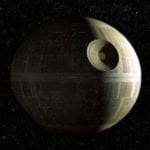 Technology
Technology  Technology
Technology  Humans
Humans 10 Everyday Human Behaviors That Are Actually Survival Instincts
 Animals
Animals 10 Animals That Humiliated and Harmed Historical Leaders
 History
History 10 Most Influential Protests in Modern History
 Creepy
Creepy 10 More Representations of Death from Myth, Legend, and Folktale
 Technology
Technology 10 Scientific Breakthroughs of 2025 That’ll Change Everything
 Our World
Our World 10 Ways Icelandic Culture Makes Other Countries Look Boring
 Misconceptions
Misconceptions 10 Common Misconceptions About the Victorian Era
 Mysteries
Mysteries 10 Strange Unexplained Mysteries of 2025
 Miscellaneous
Miscellaneous 10 of History’s Most Bell-Ringing Finishing Moves
 Technology
Technology Top 10 Everyday Tech Buzzwords That Hide a Darker Past
 Humans
Humans 10 Everyday Human Behaviors That Are Actually Survival Instincts
 Animals
Animals 10 Animals That Humiliated and Harmed Historical Leaders
Who's Behind Listverse?

Jamie Frater
Head Editor
Jamie founded Listverse due to an insatiable desire to share fascinating, obscure, and bizarre facts. He has been a guest speaker on numerous national radio and television stations and is a five time published author.
More About Us History
History 10 Most Influential Protests in Modern History
 Creepy
Creepy 10 More Representations of Death from Myth, Legend, and Folktale
 Technology
Technology 10 Scientific Breakthroughs of 2025 That’ll Change Everything
 Our World
Our World 10 Ways Icelandic Culture Makes Other Countries Look Boring
 Misconceptions
Misconceptions 10 Common Misconceptions About the Victorian Era
 Mysteries
Mysteries 10 Strange Unexplained Mysteries of 2025
 Miscellaneous
Miscellaneous 10 of History’s Most Bell-Ringing Finishing Moves
10 Sci-Fi & Fantasy Films That Are Actually About Climate Change
It’s second nature for any filmmaker worth their salt to pack their movies with themes that contextualize and expand upon the action on screen. Still, humble viewers that we are, many of us ignore the subtext and latch onto the explosions, fights, and romantic flings instead. So, it pays to go back and take another look.
Indeed, it’s often not our fault for missing the bigger picture, even if it is existential. Man-made climate change has been a known and growing concern for people around the globe since the latter half of the 20th century. With greenhouse gases accumulating, ocean levels rising, and global temperatures spiking, plenty of directors have taken note.
The films that have been made as a result purport to be about one thing—child robots, alien overlords, forest gods—but really use their narratives and characters as vehicles to explore climate change, global warming, environmental damage, and consequences (whether we think of them this way or not).
Related: Top 10 Horror Films That Disturbed the Crew
10 A.I.: Artificial Intelligence (2001)
An overlooked gem of contemporary sci-fi, Steven Spielberg’s A.I. appears, on the surface, merely to be about the child robot David’s (Haley Joel Osment) quest to be loved, but, in fact, presents a compelling picture of the consequences of global climate change.
Given the engrossing nature of Spielberg’s filmmaking, it’s easy to forget A.I. is set in “the years after the ice caps had melted… because of the greenhouse gases and the oceans had risen to drown so many cities.” In fact, this is the genesis for the entire film because Western governments responded to the crisis by limiting natural births, and robots proliferated.
A glimpse into the future, the film presents a familiar reality where profit and technological advancement are prioritized over the natural world. Every landscape, building, and gadget presented to us throughout serves as proof of humanity’s hubris. There is no divergence from the failing model of free-market neoliberalism and consumer capitalism that has driven the planet to this point. As we see in the final scene, when David has traveled 2,000 years into the future, it all ends with a frozen planet that harbors no more human life.[1]
9 Wall-E (2008)
Wall-E is the story of the eponymous 29th-century robot who spends his days patrolling the Earth cleaning up garbage. But after some 700 years in post, he’s a little lonely. Lucky for him, a sleek, shiny love interest—EVE—arrives on Earth on a scanning mission. Wall-E follows her on a cross-galaxy adventure.
So far, so cute and cozy. However, Disney-Pixar’s clanky robot feature has a bigger message behind it because the Earth Wall-E inhabits is a vacant wasteland. Evacuated by megacorporation Buy n Large, humanity abandoned the planet centuries ago. And the little guy was left to trundle around a planet ravaged by corporate greed, overpopulation, and climate abuse.
This stark subtext underpinning a children’s movie caused controversy on release, particularly among U.S. right-wing commentators. When the furor reached fever pitch, director Andrew Stanton was forced to step in to calm the waters and dispel the idea of the film being a “part of some secret, liberal Hollywood agenda,” releasing a statement that Wall-E’s love story is the focus, and the climate message merely incidental…[2]
8 Snowpiercer (2013)
Before international darling Parasite swept the world, South Korean filmmaker Bong Joon Ho was creeping into the public with environmentally conscious films like Snowpiercer. The movie takes place on a high-speed train in perpetual motion, where passengers live along class lines, the carriages running from rich and spacious at the front to squalid and cramped at the back.
While this is plenty of social commentary on its own, the deeper message in Snowpiercer is why they’re on the train in the first place and what the world looks like outside. The titular Snowpiercer is, in fact, pelting through an icy tundra, traveling around a “snowball Earth” blighted by the climate crisis and failed attempts by humanity to engineer its way out of warming.
Bong has an affinity for socially conscious filmmaking and saw the opportunity to tell a story fusing social inequity and climate catastrophe in Jacques Lob and Jean-Marc Rochette’s graphic novel Le Transperceneige. Bong took their concepts and ran with them to tell a story about how humans try to blindly control everything—society, nature, other humans—so that even when they try to stop global warming using technology, they make disaster inevitable.[3]
7 FernGully: The Last Rainforest (1992)
One of the rare animated musicals from the ’90s not made by Disney, FernGully: The Last Rainforest is set in an Australian rainforest where fairies work with animals to protect their home from loggers and Hexxus, an evil pollutive entity who destroys nature for pleasure and feeds on smoke and sludge.
Despite the children’s cartoon finding its protagonists in a group of tiny fairy people who ride bugs for fun, the film’s focal point is the real-world message of deforestation and the engulfing smog of industrial intervention in nature.
Producer Wayne Young was the driving force behind making the film and its strong environmental concerns. Coupled with his passion for saving the planet, Young’s inspiration for the film was the bedtime stories his wife Diana told their children, which featured a tribe of fairies living in an endangered natural world. But, despite putting his weight behind the picture from the beginning, it took 15 years to get it made, with him and director Bill Kroyer only securing funding on the wave of celebrity environmentalism that swept the West in the late 1980s and early 1990s against powerful opposition from Disney.[4]
6 Don’t Look Up (2021)
Adam McKay’s social satire Don’t Look Up tells the story of two American astronomer academics—Leonardo DiCaprio’s Randall Mindy and Jennifer Lawrence’s Kate Dibiasky—who discover a large comet on a trajectory to collide with Earth, and whose attempts to get the word out and warm their fellow countrymen falls on willfully deaf ears.
Randall and Kate are met with derision in the media, denial from the government, and abuse from the everyday man on the street. But this satire of contemporary media and politics was always meant to have a larger implication. The film uses the celestial body as a metaphor for the climate crisis, with everyone with a vested interest vehemently denying its existence right up to the moment it literally destroys the planet.
And this is no coincidence—director Adam McKay intentionally set out to make a film about climate change. He chose a comet because it circumvents the conceptually challenging “slow-moving, massive, macro change” and used it to highlight so many people’s tendency to ignore, deny, or run scared from the truth.[5]
5 The Day the Earth Stood Still (2008)
An underappreciated remake of the 1951 sci-fi classic The Day the Earth Stood Still put Keanu Reeves in what many would describe as his ideal acting role: a detached, monotone visitor from another world. Reeves stars as Klaatu, a being who arrives on Earth with a word of warning for humanity: save the planet from ecocide or suffer the consequences.
Although the most memorable image from the film is the cyclopic behemoth sent to enforce Klaatu’s dictates, the reason for the extra-terrestrial threat is often forgotten: they have come to save the planet from humanity’s rapid industrialization and consumer-capitalist model, which are tearing it apart from the ozone down.
This is a marked departure from the original film, which was released during the Cold War and was more concerned with nuclear disarmament. But it’s also what Derrickson and Reeves (who collaborated on the plot) used to make it relevant and distinct. They even invited real scientists to help them get the science right and design a convincing biotechnology for the aliens that could thematically contrast our man-made industrial, environment-destroying technology.[6]
4 Soylent Green (1973)
A forerunner of climate-conscious cinema, Richard Fleischer’s Soylent Green offered up a science fiction dystopia unlike any other at the time. The film takes place in an imagined 2022, where overpopulation and global pollution have led to year-round humidity, mass unemployment, and such a depletion of natural resources that everyone exists on a diet of the wafer-like substance Soylent Green.
The big takeaway from the film is that the food is made from people. But behind the horrors of this central conceit, there is a cautionary tale aimed at demonstrating how rampant corporate greed and overpopulation can lead to a devastated environment and a ravaged world.
Despite the high-concept sci-fi twist at its center, Soylent Green responded to developing climate science and painted a fairly accurate picture of what we might expect for a warmed planet. In fact, it was so ahead of its time that it was one of the first Hollywood productions to mention the greenhouse effect, explore climate change in narrative, and portray the associated impacts.[7]
3 Interstellar (2014)
Interstellar puts Matthew McConaughey in the pilot’s seat as astronaut Joseph Cooper, sending him across the universe in search of a planet that can sustain human life and become the species’ next home. Director Christopher Nolan didn’t spare a cent of his $165 million budget to bring his space and planetscapes to life, using both known and conceptual astronomy to render our universe in ways never before seen on the big screen.
While it’s easy to get swept up in the sublime visuals and time-and-space dilating madness, Interstellar’s plot is borne of one major issue: the Earth has heated, crops are becoming untenable, and humanity desperately needs somewhere else to go before we’re wiped out entirely.
Nolan’s inspiration came from films like Steven Spielberg’s Close Encounters of the Third Kind, which speculated about a time when humans were forced to reassess their place in the cosmos—but instead of the arrival of alien life, Nolan used global warming as his basis. And he even made a convert of supporting actor Michael Caine—who hadn’t believed in climate change—in the process.[8]
2 Princess Mononoke (1997)
Most Hayao Miyazaki films have a deep affinity with the natural world, often pitting spirits and saviors of nature against greedy (frequently Western-coded) capitalists, industrialists, invaders, and madmen. Princess Mononoke pits wolf girl San and her animal allies against the encroaching Irontown, which threatens to swallow the Forest of the Gods.
On the face of it, this can be read as a simple battle of good and evil. But scratching the surface, we see that the environment is personified and mankind is at war with nature itself. At the same time, an environmentalist prince tries to broker peace and prevent mutually assured destruction.
The film’s ending has wounds heal and plants spring to life again, demonstrating the powerful, cyclical form of nature if given the chance to start anew and thrive; a hopeful message from a director whose films are rife with damning critiques of industrial devastation. It is intended as a rallying cry to viewers, to show that no matter how bad the environmental disaster gets, there is always a path beyond despair, a route for life in some form to go on.[9]
1 Avatar (2009)
James Cameron’s sci-fi epic Avatar was lauded for its technological developments at the time, but it packed a much starker message. Set in the 22nd century, the film takes place at a time when Earth has suffered ecological collapse, and humanity has branched out to other solar systems, colonizing lush alien planets and mining their resources at the expense of the natives.
Cameron intentionally paired high action and personal character dramas with his message, intending not to preach but to engross audiences and create an emotional reaction. His hope was that all viewers’ natural moral outrage would inspire them to be activists for the Earth, face the planet’s damage, and reject the industrial machine and global powers that insist on profit and dominance over nature.
And, true to his own message, the director had a 60-kilowatt solar array custom-built in order to produce enough energy to run his cameras, computers, and performance capture systems so that all of the Avatar sequels could be green and climate neutral.[10]








